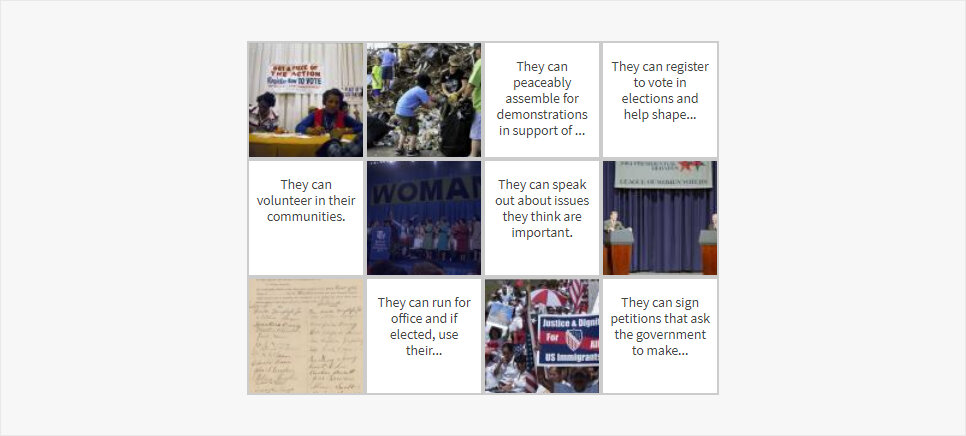During this activity, students will match examples of civic engagement to records from the National Archives to answer the question, how can people make a difference?
Suggested Teaching Instructions
Students will discover the many ways people can make a difference in their communities and influence their government. This activity can be used when teaching about civic participation and rights and responsibilities.
For grades 3-5. Approximate time needed is 45 minutes.
Instructions: This activity can be presented to the whole class or completed by students in small groups. Before beginning the activity, it may be helpful to review the following vocabulary:
Assemble: to gather with a group
Petition: a written request, often signed by many people, asking the government to fix a problem
The First Amendment of the Bill of Rights protects the the right to assemble and to petition the government, along with the freedom of speech, press, and religion.
Open the activity. Start by reviewing the different examples of how citizens can make a difference included in the activity:
- They can sign petitions that ask the government to make changes.
- They can peaceably assemble for demonstrations in support of issues they care about.
- They can run for office and, if elected, use their power to make a difference.
- They can speak out about issues they think are important.
- They can volunteer in their communities.
- They can register to vote in elections and help shape the government by voting for people who share their views.
Next, chose a document and click the icon in the lower right corner to examine the full image. Model careful
document analysis with the students to figure out what is happening in each photo or document. Then ask students to match the document to the best example of how citizens can make a difference. Continue this process in until all the pairs have been matched, or, ask students to work in small groups to complete the activity.
After students have matched all the pairs, they will see a photo of the National Archives. The National Archives preserves and protects the records of the United States government. These records include documents and materials like photographs, videos, artwork, etc. that are created or collected by the government. Among these records you can find examples of how people participate in government and make a difference in their communities, including the examples you just examined.
Instruct students to take a look at the different examples of ways to make a difference that they discovered today. Ask them to consider the following questions:
1. Which documents show examples of ways you can make a difference in your own community today?
2. Which documents show examples of ways to participate that have additional requirements? (For example, age requirements.)





